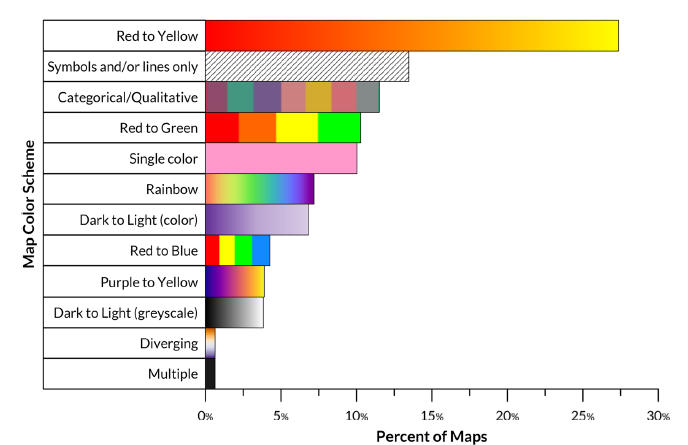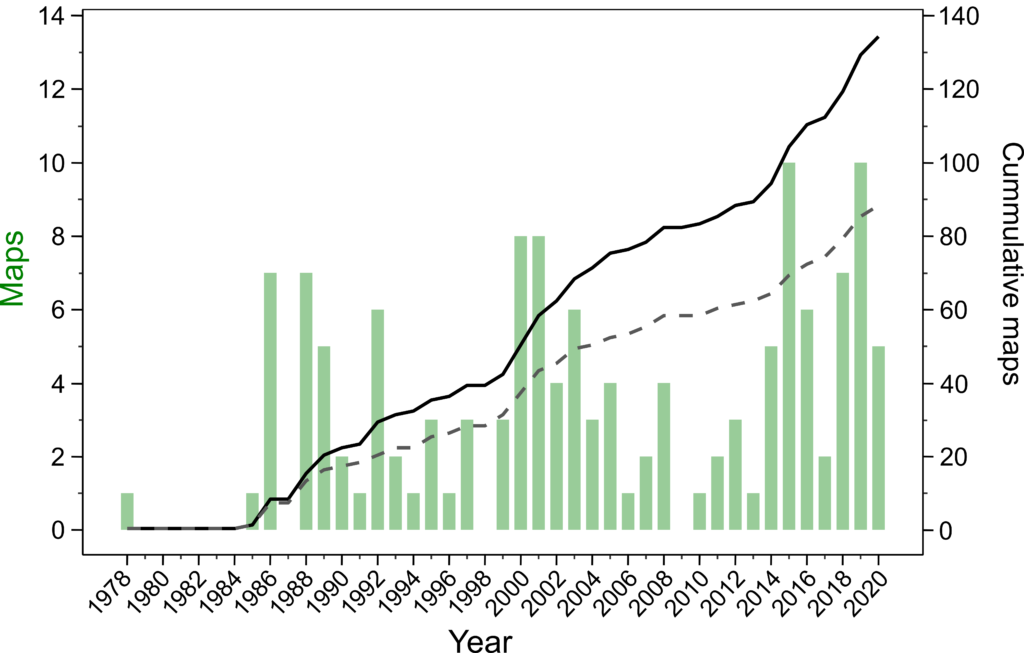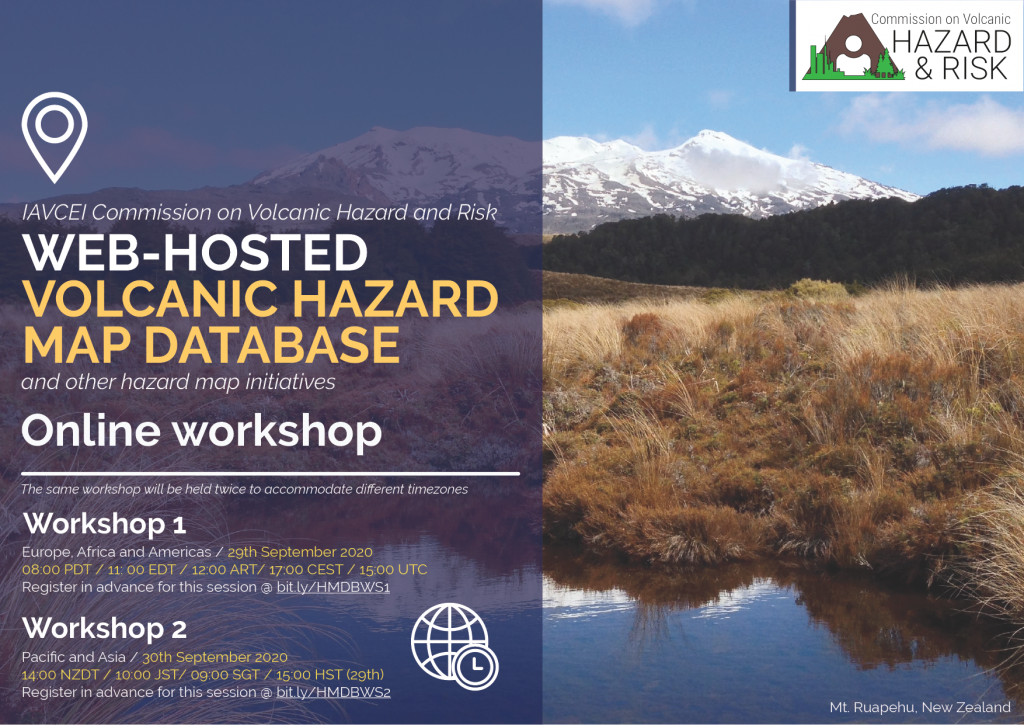Welcome to the IAVCEI Commission on Volcanic Hazard & Risk Volcanic Hazard Maps website!
The purpose of the website is, primarily, to serve as a resource for hazard mappers (or other interested parties) to explore how common issues in hazard map development have been addressed at different volcanoes, in different countries, for different hazards, and for different intended audiences. We also strive to provide a look at how hazard maps have evolved through time, both globally and at specific volcanoes.
The IAVCEI CVHR Volcanic Hazard Map Database underlies this website and is a searchable global collection of volcanic hazard maps. Map classification metadata such as hazard types considered, hazard zone presentation, temporal and spatial scale, zonation methodology, and audience and purpose have been cataloged (see the Diversity of Maps pages) and can be used to search for particular maps of interest using our search and browse tools:
Read more about how the database was created and who is involved in the project on the About the Database page.
This is version 1.0 of the website and database which was populated by examining each map in detail and recording map metadata. Sometimes, map data was not always readily apparent or the map was translated using a variety of tools. As such, we fully anticipate that there may be errors! We also know that we are missing important maps that we would love to include. To suggest corrections or add maps to the database, please contact us!



